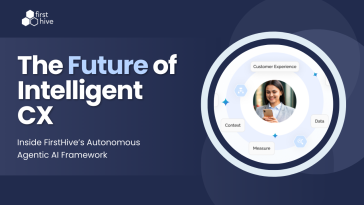India's approach to data protection has officially moved from intent to execution.
On November 14, 2025, the notification of the Digital Personal Data Protection (DPDP) Rules marked the moment when privacy shifted from policy conversation to operational requirement. For enterprises, this changes everything about how customer data is collected, stored, governed, and activated.
This is not simply about compliance. It's about whether your data foundation is strong enough to support privacy, trust, and growth at the same time.
From Policy to Infrastructure: What Actually Changed
The DPDP Act of 2023 laid out principles. The 2025 Rules define execution.
The Rules introduce mandatory data lifecycle management, stricter consent standards, accelerated breach reporting, and clear compliance timelines. For Significant Data Fiduciaries, annual audits and risk assessments are now required.
More importantly, these Rules place direct operational responsibility on organizations to prove that their data practices are not just compliant on paper, but executable across systems.
The Real Problem: Customer Data Architecture
This changes the role of privacy inside an organization. It can no longer sit at the end of the process with legal or compliance teams. It has to be embedded into the core data infrastructure that connects marketing, CRM, customer engagement, analytics, and digital platforms. And this is where most organizations are currently vulnerable.
Customer data today is scattered across tools and teams. Consent lives in one system, campaign activation in another, and audit trails in yet another. Most enterprises don't have one customer data system - they have eight or ten.
Under DPDP, this fragmentation becomes a real risk. Compliance now depends on consistency across the entire customer data ecosystem.
Managing consent, erasure, access requests, and audit logs across fragmented systems is where theory meets operational reality. Suddenly, DPDP is no longer just a regulation problem. It becomes a customer data architecture problem.
How FirstHive Is Already Aligned to This Shift
At FirstHive, we have been anticipating this shift in data responsibility and governance for years.
Our platform is built around the idea that customer data must be unified, governed, and controlled before it can be activated. Core capabilities like identity resolution, consent management, purpose tagging, data lineage, lifecycle management, and auditability are deeply embedded into the FirstHive CDP.
This means that when DPDP mandates structured consent, controlled use of data, clear retention timelines, and auditable data flows, FirstHive customers are not starting from scratch. They are building on an existing privacy-ready data foundation.
Instead of treating compliance as a patchwork of manual interventions across tools, FirstHive helps enterprises operationalize DPDP through centralized governance and orchestration at the data layer itself.
FirstHive acts as the control layer that sits at the center of your customer data ecosystem - connecting, governing, and orchestrating data across systems. When a user requests deletion or correction, the action flows through FirstHive into connected systems, not through manual, siloed processes.
In a world where privacy is now infrastructure, not an afterthought, that difference matters.
Why This Matters for Enterprise Leaders
For CMOs, CDOs, Martech Heads, and Data Leaders, the question is no longer how to respond to DPDP. It is how to build a data ecosystem where compliance, personalization, and customer trust are aligned — not in conflict.
Enterprises that treat DPDP as a checkbox exercise will struggle to scale. But those that use it as a moment to clean up, unify, and govern their data will convert privacy compliance into a competitive advantage.
Join Us: Live Webinar with FirstHive CPO
To help enterprises navigate this transition, FirstHive is hosting a live webinar with Vishal Sukheja, Chief Product Officer at FirstHive.
In this session, Vishal will share how organizations can move from fragmented compliance efforts to a unified, privacy-ready data foundation — and how to operationalize DPDP without disrupting personalization or customer experience.
What You'll Learn:
✅ How to operationalize consent, erasure, and data rights at scale
✅ How FirstHive makes privacy a native part of data infrastructure — not a bolt-on
This isn't about legal jargon. It's a conversation designed for leaders responsible for customer data, digital transformation, and marketing technology.








